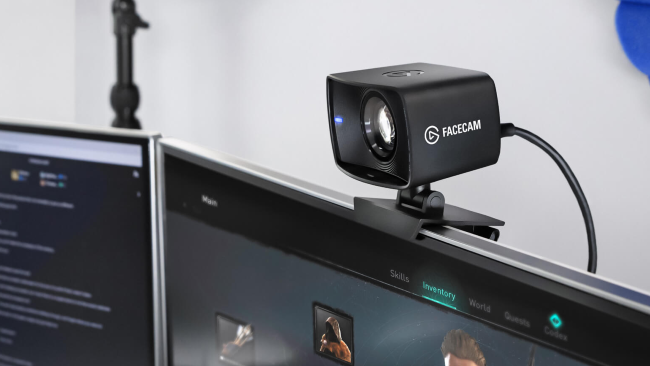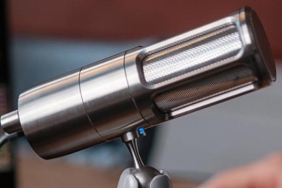I believe that face-to-face communication is important, and in an era more and more reliant on working from home and remote meetings, webcams are an all-important part of that communication process. Whether it’s utilizing a feed of your face while streaming the latest game, or trying to make your point in a virtual meeting, putting your best face forward is imperative, and that’s largely dictated by the hardware you use. The Elgato Facecam comes from a company intent on world domination, at least when it comes to the world of home streaming solutions.
Elgato sent us a Facecam to try for ourselves. The Facecam is simply a USB camera. It doesn’t include a lot of poorly-implemented functionality that other webcams do, such as blurry autofocus, grainy zoom, pithy onboard lighting, or even a terrible quality microphone. This leaves the hardware room to focus entirely on offering the best picture possible for a USB webcam at this price, and short of getting a more expensive 4K webcam or utilizing a much more expensive DSLR and custom lenses, you’re not going to find many better solutions on the market right now.
Facecam features eight glass elements in its prime lens, with a f/2.4 aperture and full-frame equivalent focal length of 24 mm. Assorted filters on the lens elements, such as eighteen anti-reflective coatings, an IR cut filter, and low-dispersion glass, ensure that the image and quality remains consistent without interference or distortion. The sensor is a Sony STARVIS CMOS sensor, which provides high detail capture with low noise, even at a higher ISO. A custom heatsink for the board means that it runs cool all the time.
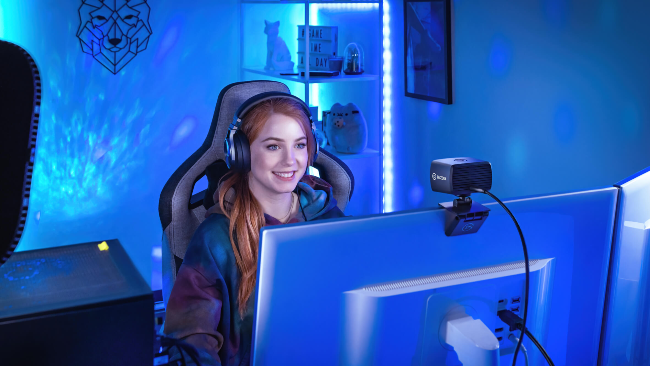
The Facecam itself comes with a monitor mount/stand that allows it to sit on its own wherever you want it, or you can remove the clamp from the threading to use it with an Elgato multi-mount, offering even more freedom in positioning if your monitor or desktop doesn’t provide a convenient place (or good angle). If using the included mounting clamp, it may take some fiddling to get it to stay exactly where you want, thanks to the relatively rigid USB cord which can overpower the friction of the clamp and shift the angle of the Facecam. It’s a small complaint, but I wish the clamp could be more easily tightened so that merely bumping the USB cord didn’t knock the whole camera askew. (There is a tightening mechanism on the threading, but I found it to either be so tight adjustments were impossible, or loose enough that the Facecam position could be overpowered by the USB cable, with almost no in-between.)
Elgato Facecam Review – Lights! Facecam! Action!
From a plug-and-play perspective, the Elgato Facecam is a huge step up in quality from other webcams, though it comes with a price to match. Right away you’ll get the potential for 1080p video at 60fps with no compression or codecs introducing artifacts or other issues into your feed. It performs very well in low-light scenarios with relatively little noise from the automated frame speed and ISO, though this also means that in ideal and bright lighting conditions it can lean more towards the washed-out side of the spectrum at default.
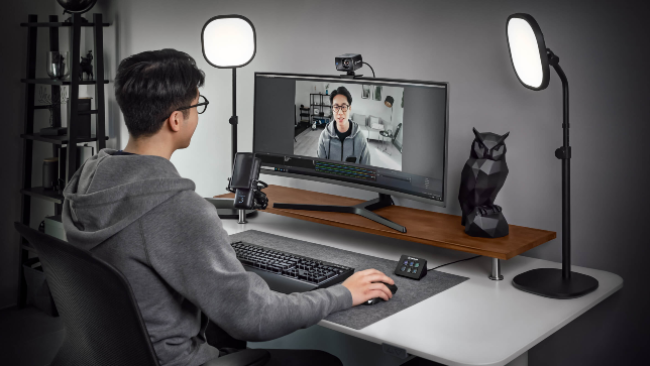
Fortunately, you can play with the settings via Elgato’s Camera Hub software, which will then save directly to the camera hardware via the onboard flash memory—no need to run the software again unless you want to further adjust your settings. Camera Hub allows users to really dial in the specifics of Facecam’s image capture, so whether you’re streaming the latest games in low light with neon colored backgrounds or joining your weekly team meeting in a well-lit home office, you can make sure Facecam looks perfect for you.
Via Camera Hub you can adjust the contrast, saturation, and sharpness, change the exposure via shutter speed and ISO, and play with the white balance/temperature of the image. There are also options for noise reduction and zoom/field of view (FOV), though note that the zoom/FOV option is entirely a digital zoom (default starts at 82 degrees), which starts to really show in the quality once you go past about 2x. To be fair, even with the digital zoom cranked up, the quality is still arguably better than a $50 webcam off of Amazon, but you’ll probably want use it relatively little if you want to keep the low-noise, high-resolution image that the full-frame default settings offer. All of these settings can be saved to the onboard flash memory, so they will still be there even if you unplug the camera to use with a different device; just don’t forget to actually hit “save” in the Camera Hub software first.
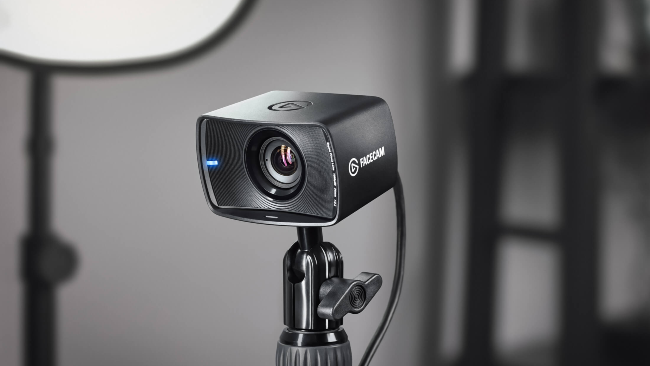
Aside from your own adjustments, Elgato says that the Facecam is making “millions of calculations per millisecond” in its processor, including defect and color correction, tone curve mapping, flicker compensation, and more. This shows in the very steady image that is displayed constantly (where with cheaper webcams you would see the color corrections and flickers happening as elements within the scene moved and changed). This consistency is important in Facecam’s level of quality output. For example, if you leaned in closer to most other cameras, focus adjustments and exposure adjustments would compensate, visibly and slowly changing the exposure of the image, darkening and lightening everything dramatically as you changed your position. Facecam makes much more subtle adjustments to maintain visual quality, focal consistency, and exposure no matter what you throw at it.
Another edge to the quality Facecam offers is true 1080p/60fps. While that’s obviously limited depending on what you are using the camera for—you can’t control someone else’s connection to Zoom, for example—you at least know that the quality of the video input at the source is impeccable. Colors are bright, contrast is deep, lighting looks great, and the consistent fluid motion at a high resolution really brings a level of quality to your webcam video that you can’t really get from other simple plug-and-play solutions like the Facecam.
I’d be remiss not to mention the privacy cap, which, while appreciated, is an awkward separate loose disc that clicks into place over the lens. Sometimes I can easily twist it out without any issues, and others I struggle to pop it off, inevitably moving the Facecam’s angle and requiring repositioning. Then there’s really no convenient place to put the cap except somewhere loose on your desk. The addition of a privacy cap is appreciated (even for one such as myself who isn’t exactly paranoid that someone’s looking through my camera), but it would have been nicer if it were some kind of integrated shutter rather than this sometimes-difficult-to-remove separate lens cap.
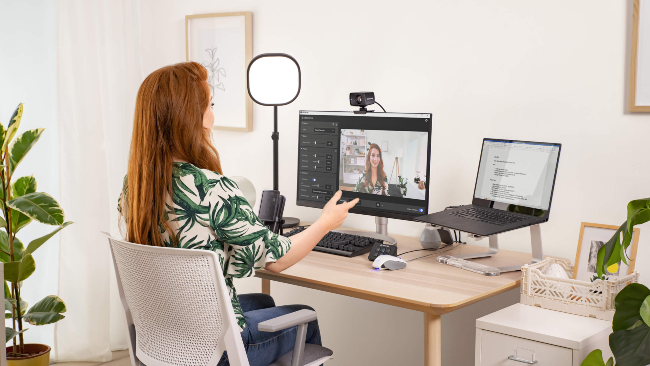
The Elgato Facecam is the perfect high-quality webcam solution for people who just need a webcam without any other unnecessary or low-quality frills (after all, you really shouldn’t be using a webcam’s onboard mic). There are certainly more advanced—and more expensive—options out there, just as there are cheaper webcams that have to make a number of cuts to reach that lower price. Facecam is a webcam that knows its audience. If you already have audio taken care of, and simply want a quality picture to accompany live streams, video calls, product unboxings, etc., Elgato Facecam slots perfectly into just about any setup.
Check out our full suite of recent Elgato product reviews:
- Elgato Key Light Review
- Elgato Wave XLR Review
- Elgato Wave Mic Arm Review
- Elgato Stream Deck Mk.2 Review
- Full Elgato Setup Evaluation
Elgato Facecam review unit provided by manufacturer. For more information, please read our Review Policy.
